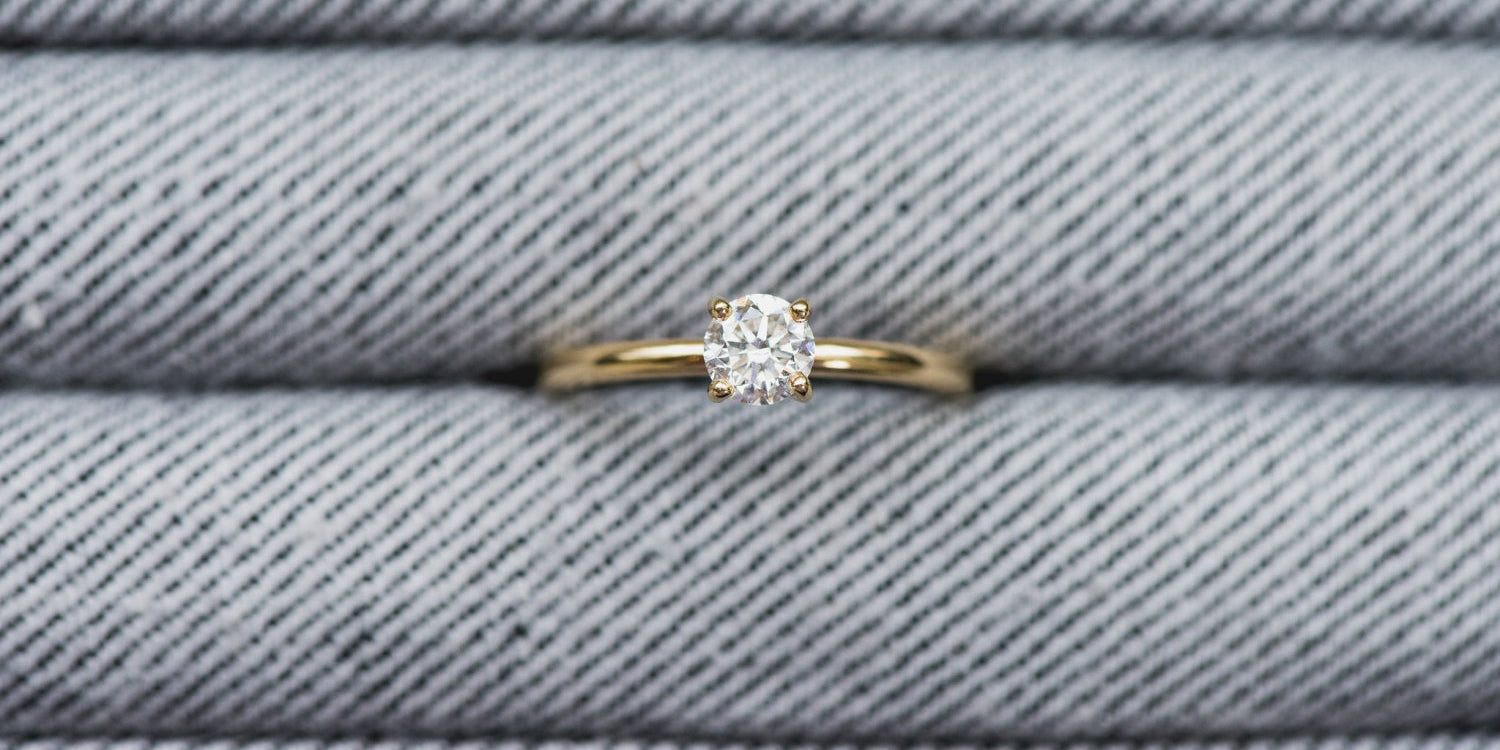Buying jewellery is about intuition; a thrill, an instant, heart-stopping moment where you see a beautiful thing and you love it. And this is how buying an engagement ring can be, as long as you don't obsess over the 4 Cs. We've put together a few helpful tips to make sure you understand the basics and get it right.

The true importance and value of the 4 Cs
The Cut, Colour, Clarity and Carat weight, otherwise known as the 4 Cs, can feel like an all-important dictator looming over your choice when it comes to buying an engagement ring. It is indeed a useful system for comparison, but in my opinion not the be all and end all when it comes to choosing a stone. Like having a survey done on a house you want to buy, it's really there to regulate the industry and to give people a solid system to price against, to value and sell something. If you love the general feel of a house, you might buy it anyway even if the survey showed up some damp. If you're making a similarly emotional purchase, like an engagement ring, this is a good way to consider the 4 Cs. The 4 Cs are the diamond equivalent of a home survey and the 'value' is worked-out by non-biased, neutral experts. The GIA are the biggest standard-setting body for diamond grading in the world; they are non-profit, and created the 4 Cs grading system to help people to buy diamonds with confidence.
The only way for a non-expert to really decipher a ‘good’ quality diamond from a poor one without any additional guidance is to have a line-up of a few, and see which ones appear brighter or duller than the others. The better quality ones should appear brighter, sparklier, and generally more aesthetically appealing than the others. The 4 Cs bring order and a system to this aesthetic judgement - the ‘scores’ each stone achieves for Cut, Colour, Clarity and Carat are all obtained by comparing them against a Master Set, the ultimate being a flawless, colourless, perfectly cut stone.
The Cut - the most important of all?
The cut is, in many opinions, the most important factor contributing to the overall beauty of a diamond. The way the diamond has been cut and polished from its rough original state - a successful and expertly cut stone will give it the all important sparkle and shine, as the light will be refracted off the facets of the stone in the best way possible. Better cut = more sparkle.

The Colour
The colour of a diamond is graded from D to Z on the GIA grading system. Starting with D, which indicates the diamond is colourless, and most desirable, through each letter of the alphabet down to a Z, considered the 'worst' - this would appear as a very yellow and dull stone. Be aware that colour variations are incredibly subtle, and to the naked and untrained eye, it would be hard to notice the difference between a D colour stone and a J, for example. Most jewellers would consider anything between a D and a G a good choice.

The Clarity
The clarity of a diamond refers to the number of internal 'flaws' or marks in the stone. Diamonds are formed from carbon that has been under intense heat and pressure deep in the earth for millions of years, and as a result have a number of blemishes. How visible these naturally occuring blemishes are affects the clarity of a diamond. So 'clarity' literally refers to how many black speckles, lines or dots there are visible in the stone. If you can see it with the naked eye, then it could be a problem, but if not - don’t obsess over the clarity. Look on the GIA report and see where they are marked and then try and spot them - it’s very hard! Anything from an 'F' (flawless) to 'VS2' won't be detectable without using a magnifying glass, and are considered the best options.

Carat weight - the least important factor...
The least important, in my opinion, is the carat weight. The weight of a diamond needs to be properly distributed by design of an excellent cut. So I never obsess over carat weight, as a smaller, excellent cut diamond can shine and sparkle much brighter than a badly cut heavier carat weight one. Larger diamonds are more rare and more expensive, but a stone with an excellent cut and colour will usually be worth more than a poor quality but larger one.
Remember, a beautifully cut and polished diamond, with few internal flaws visible to the naked eye, will sparkle in the sunshine and make you catch your breath; it really is a wonder. A good jeweller can help you make a good choice, but I always suggest going with what you love. Use your intuition, and good luck!
